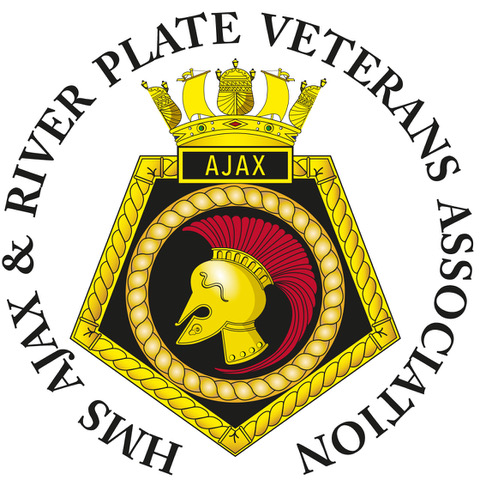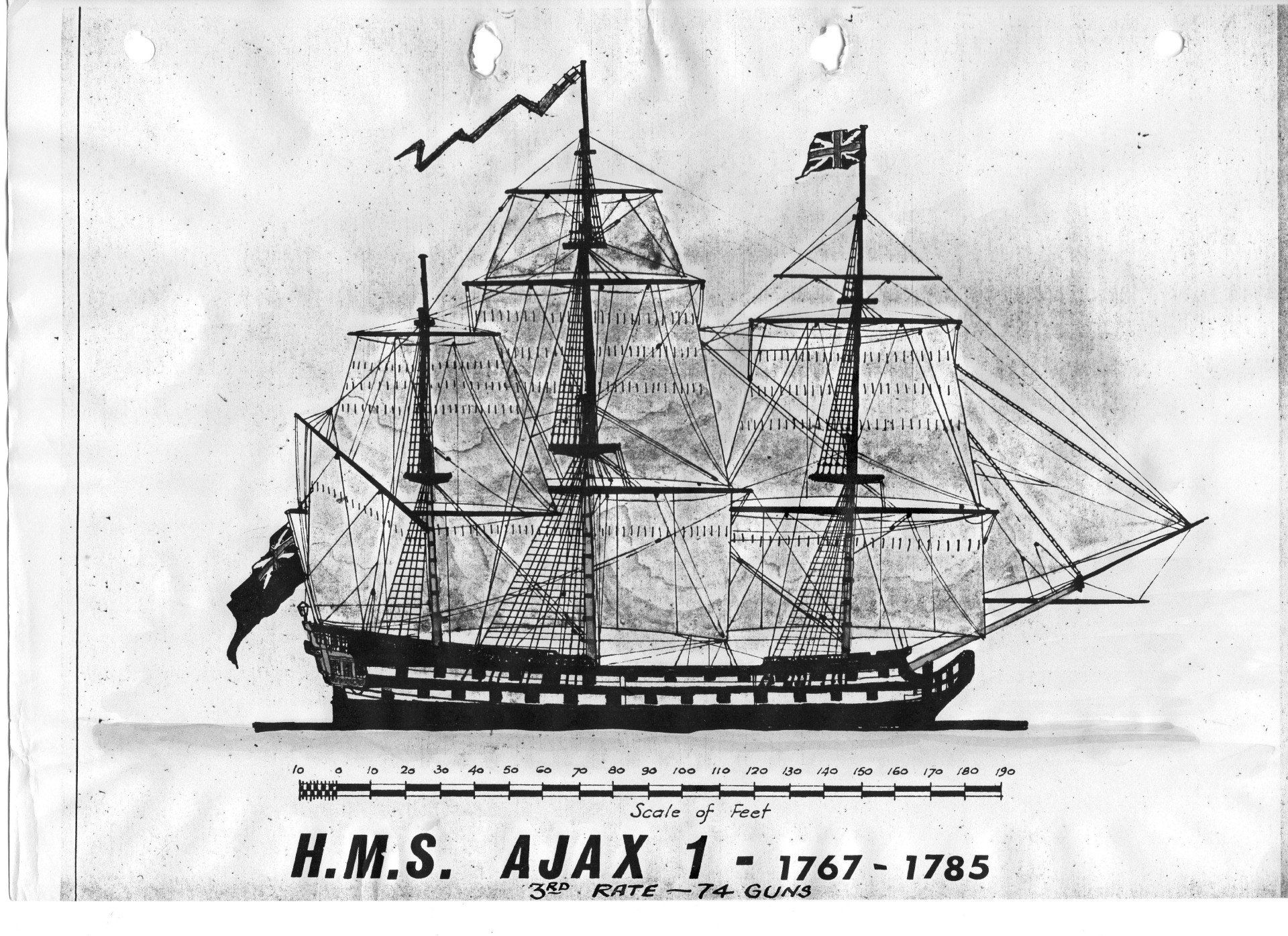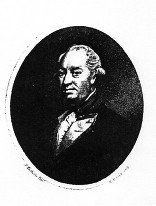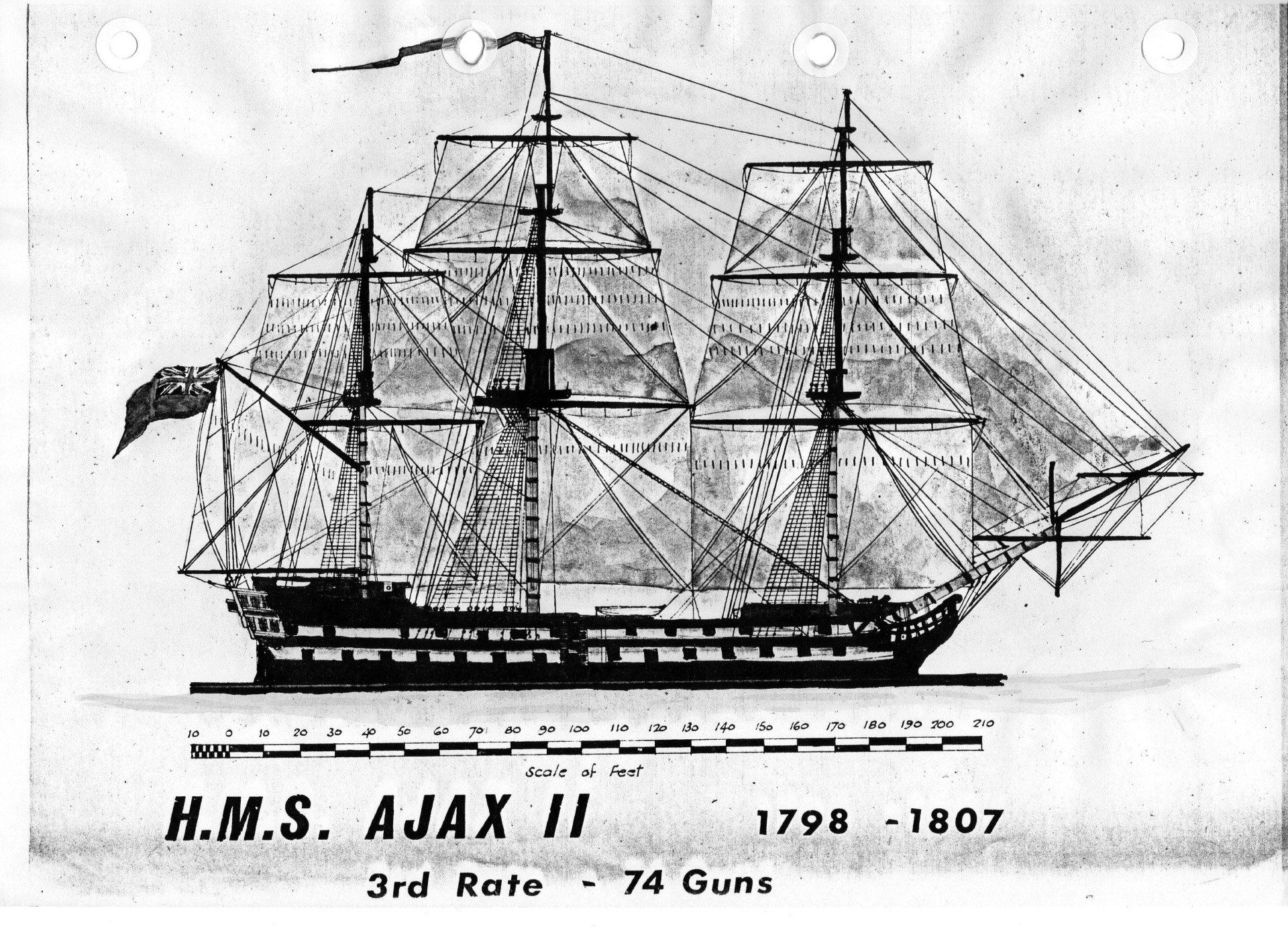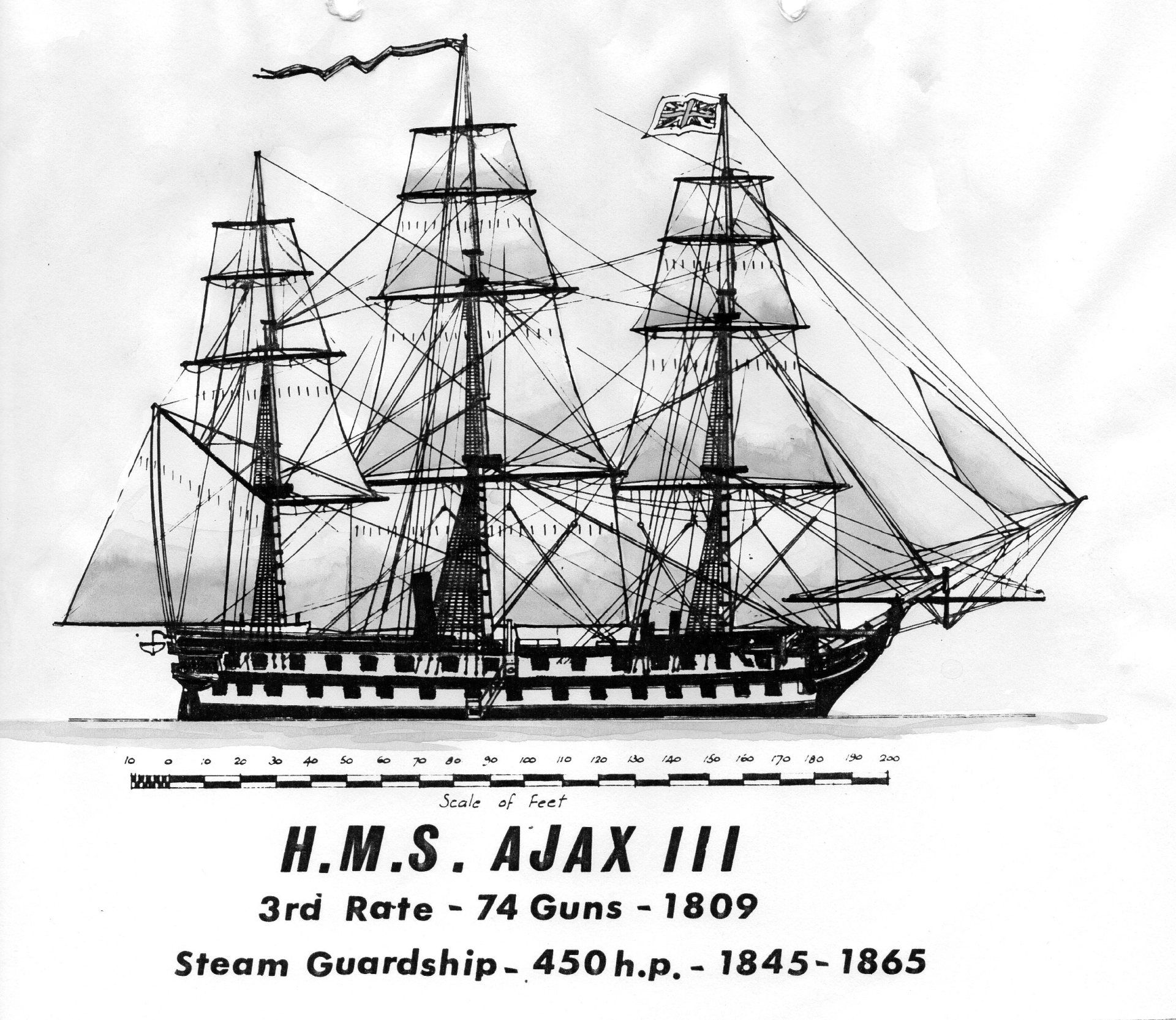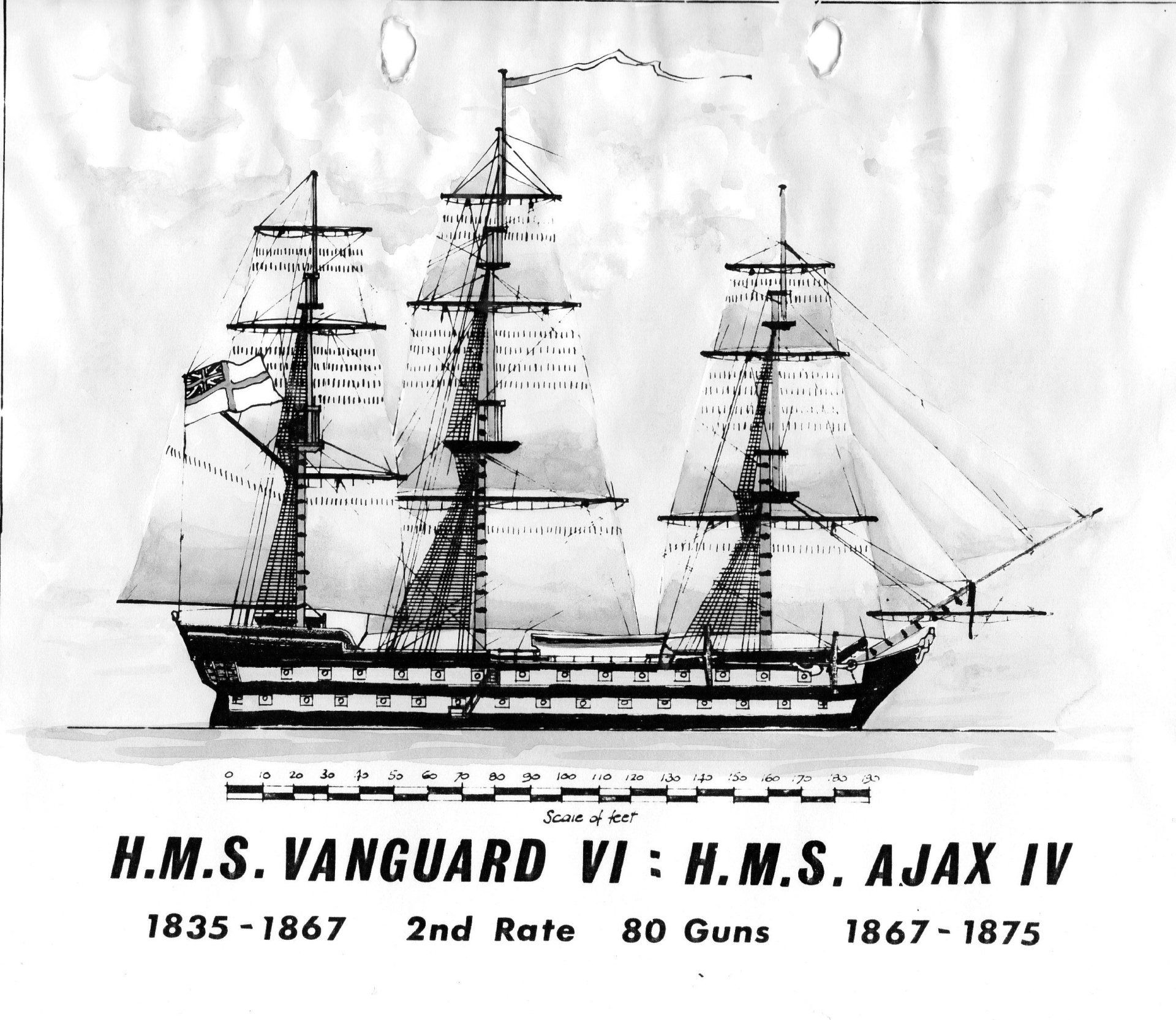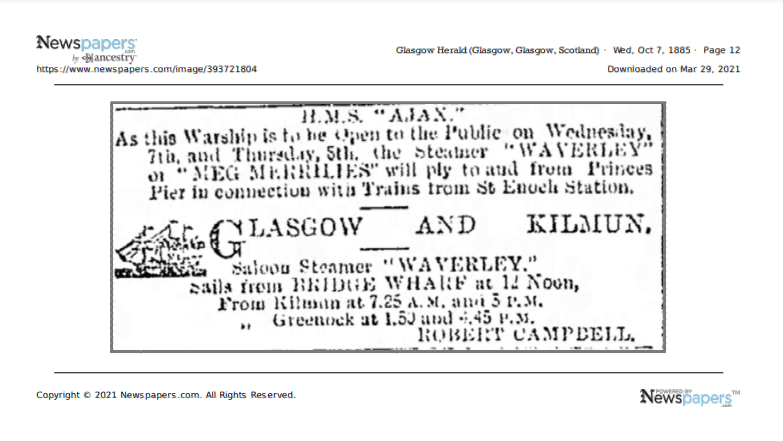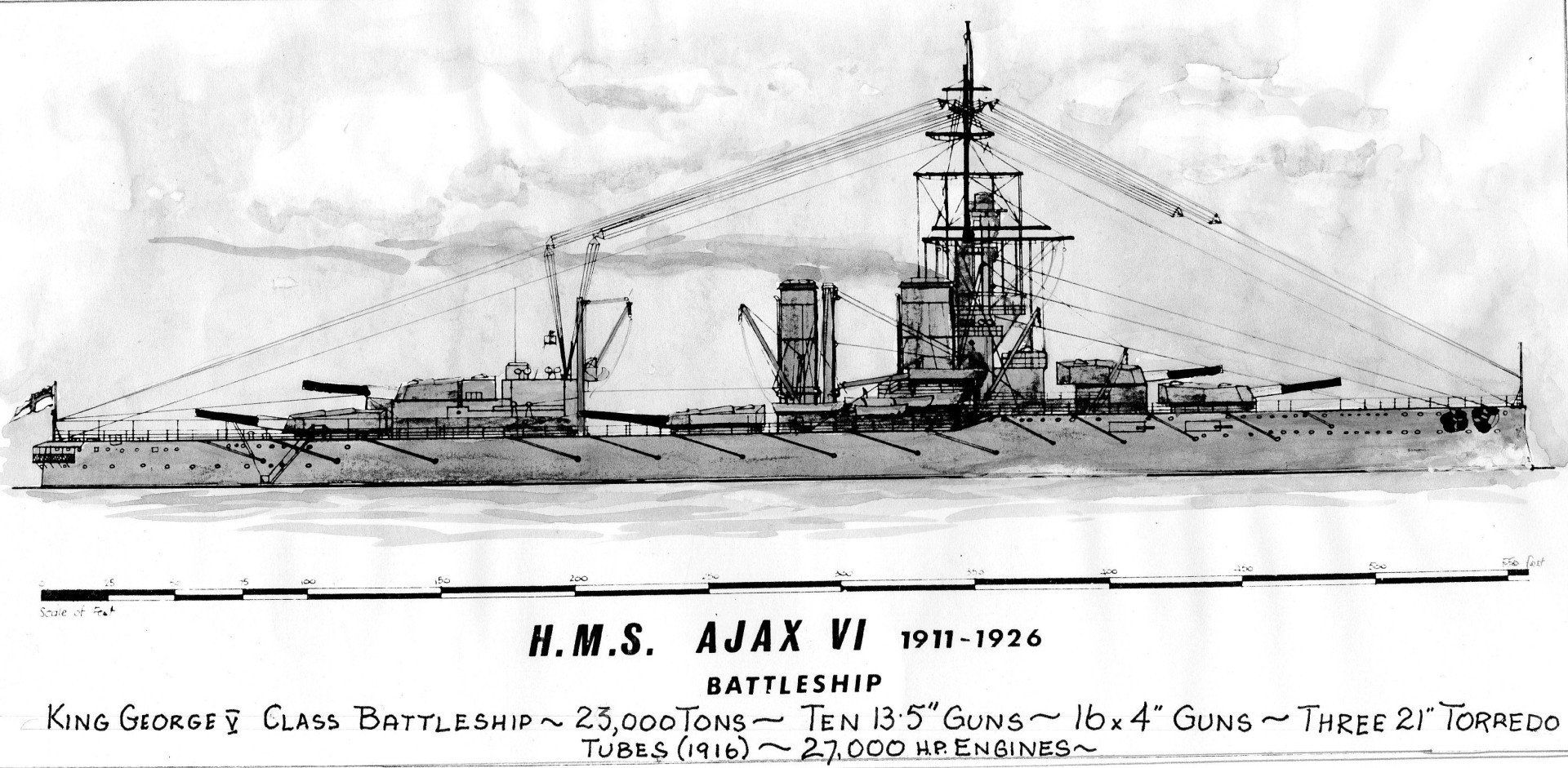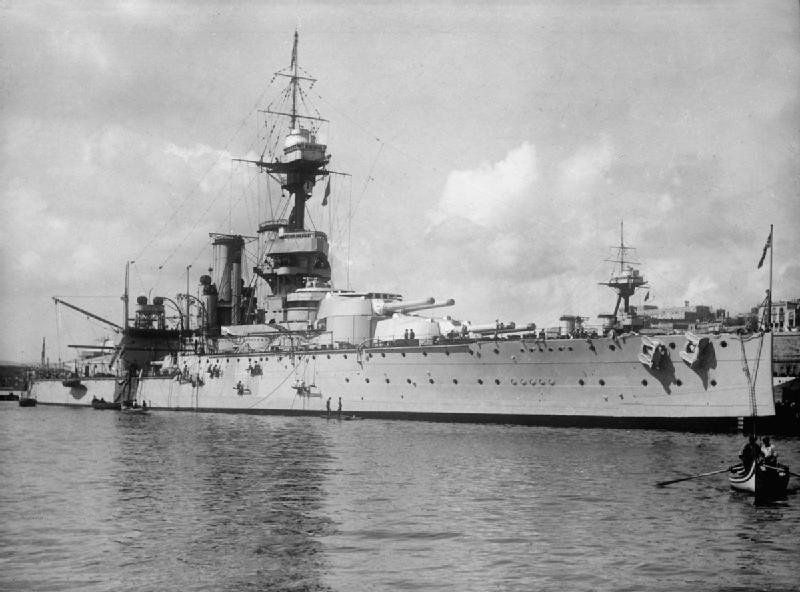Previous Ajax 1 - V1
HMS AJAX 1
The first HMS Ajax was a fully rigged 74-gun third rate ship of the line. She was launched on 23 December 1767 at Portsmouth Dockyard and first Commissioned May 1770. She was designed by William Bateley and was the only ship built to her draught. Her displacement was 1615 tons; length 167ft 10in; beam 47ft 5in. Her armament was 74 guns; 28 x 32 pounders on the gundeck; 28 x 18 pounders on the upper gundeck; 14 x 9 pounders on the quarter deck; and 4 x 9 pounders on the forecastle.
She saw extensive action in the War of American Independence and took part in the Battles of Cape St. Vincent, the Chesapeake, St. Kitts and the Saintes. She was paid off on 8 August 1783 and was finally sold in 1785.
| Captains of the First HMS Ajax | ||
|---|---|---|
| Commander | From | To |
| Capt. John Carter Allen | 27 May 1770 | 6 June 1771 |
| Capt. John Carter Allen | June 1779 | 23 Aug 1779 |
| Capt. Phillip Boteler | ?1779 | ?1779 |
| Capt. Phillip Boteler | 4 Sep 1779 | 28 Apr 1780 |
| Capt. Phillip Boteler | 10 Jun 1780 | 14 May 1781 |
| Capt. George Bowen | 15 May 1781 | 29 Jul 1781 |
| Capt. Nicholas Charrington | 30 July 1781 | 8 Aug 1783 |
Captain John Allen
HMS Ajax 111
The third HMS Ajax was launched on the Thames on 2 May 1809.
She was another 74-gun third rate ship of the line, fully rigged sailing ship. 1761 tons, length 176 ft; beam 47 ft. Armament: 28x 32 pounders; 28x 18 pounders; 6x 12 pounders; along with 12x 32 pounder carronades (short barrel cannons); & 6x 18 pounder carronades.
She received Battle Honours at the Battle of San Sebastian, Spain in 1813.
In 1846 she was converted to a coastal defence screw propulsion blockship, or steam guardship, which involved removing her ballast, copper, some bulkheads, cutting her down to a single deck and fitting a 450hp steam engine.
Although intended for defence work, blockships were often used offensively and Ajax saw service in 1854-55 in the Crimean War in the Baltic at which she received another Battle Honour.
She was finally broken up in 1864.
HMS AJAX 1V
The fourth Ajax started life as the sixth HMS Vanguard and was built at Pembroke and launched on 25 August 1835 and commissioned in 1837. She was built at a total cost of £78,000.
She was a 78-gun (80 when launched) second rate ship of the line of the Symondite design. Crew: up to 750 officers & men. 2900 tons; length 190 ft; beam 57 ft. Armament as launched: 68x 32 pounders; along with 4x 68 + 4x 32 + 4x 18 pounder carronades (Short barrelled cannons)
On 20 Oct 1867 the Vanguard was renamed Ajax to allow the name Vanguard to be given to a new iron-clad battleship.
Ajax was broken up in 1875 at Chatham.
HMS AJAX V
The fifth Ajax had moved on from the previous ones and was now an iron-clad battleship, albeit smaller and cheaper than earlier iron-clad ones, including 12.5” calibre guns rather than 16”.
She was launched on 10 March 1880 at Pembroke and commissioned 30 April 1885 into the Special Service Squadron Command; thereafter she was posted as guardship, then reduced to Reserve and further reduced to Fleet Reserve in 1893. In 1901 she was posted to Dockyard Reserve before being sold and broken up in 1904.
8510 tones; length 300 ft; Beam 66 ft. Two-shaft 6000hp engines. Crew compliment 345. Armament: 4x 12.5” muzzle-loading rifles; 2x 6” guns. Armour – up to 18” thick
